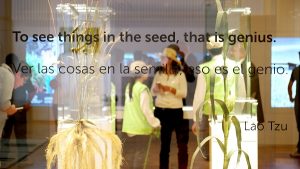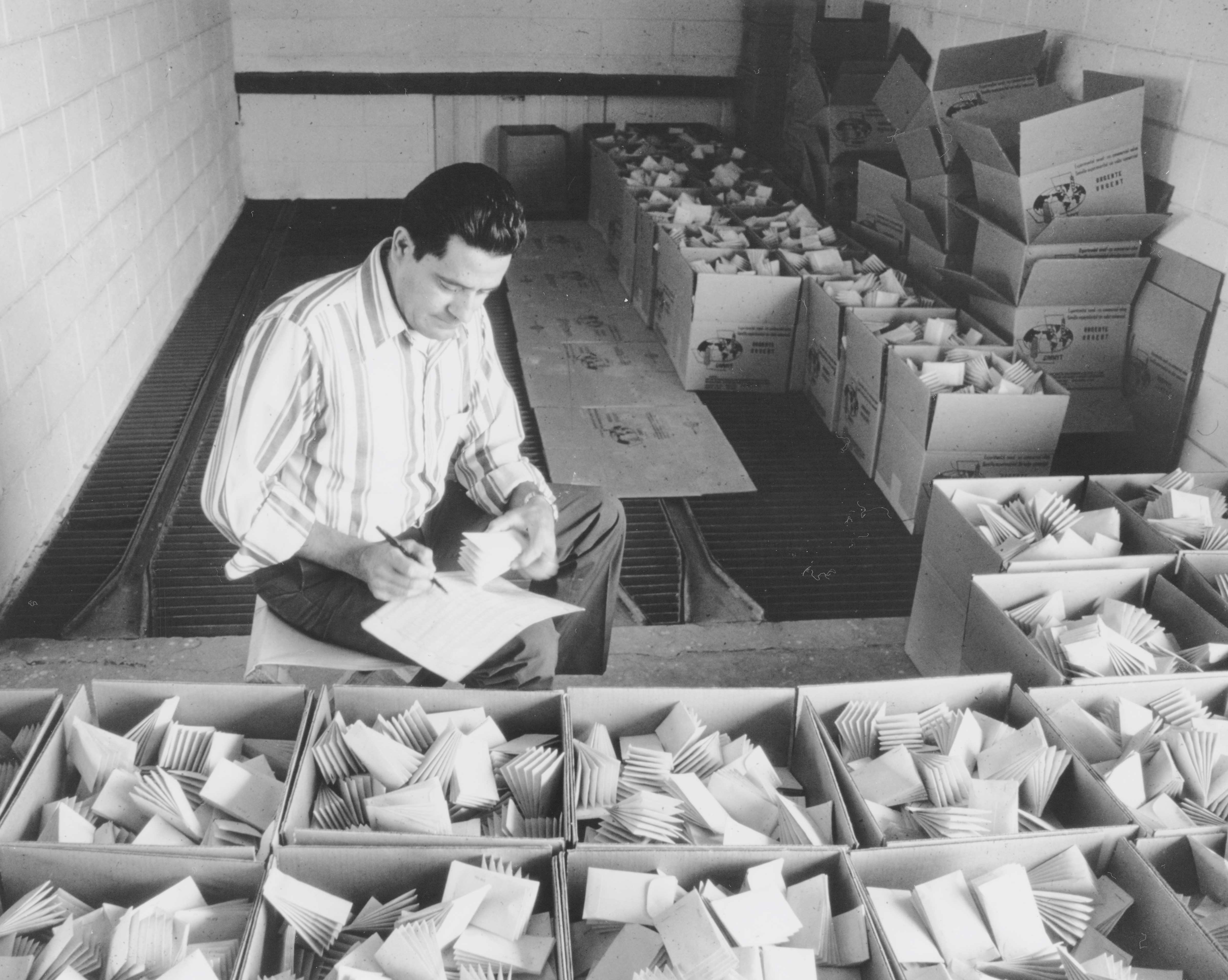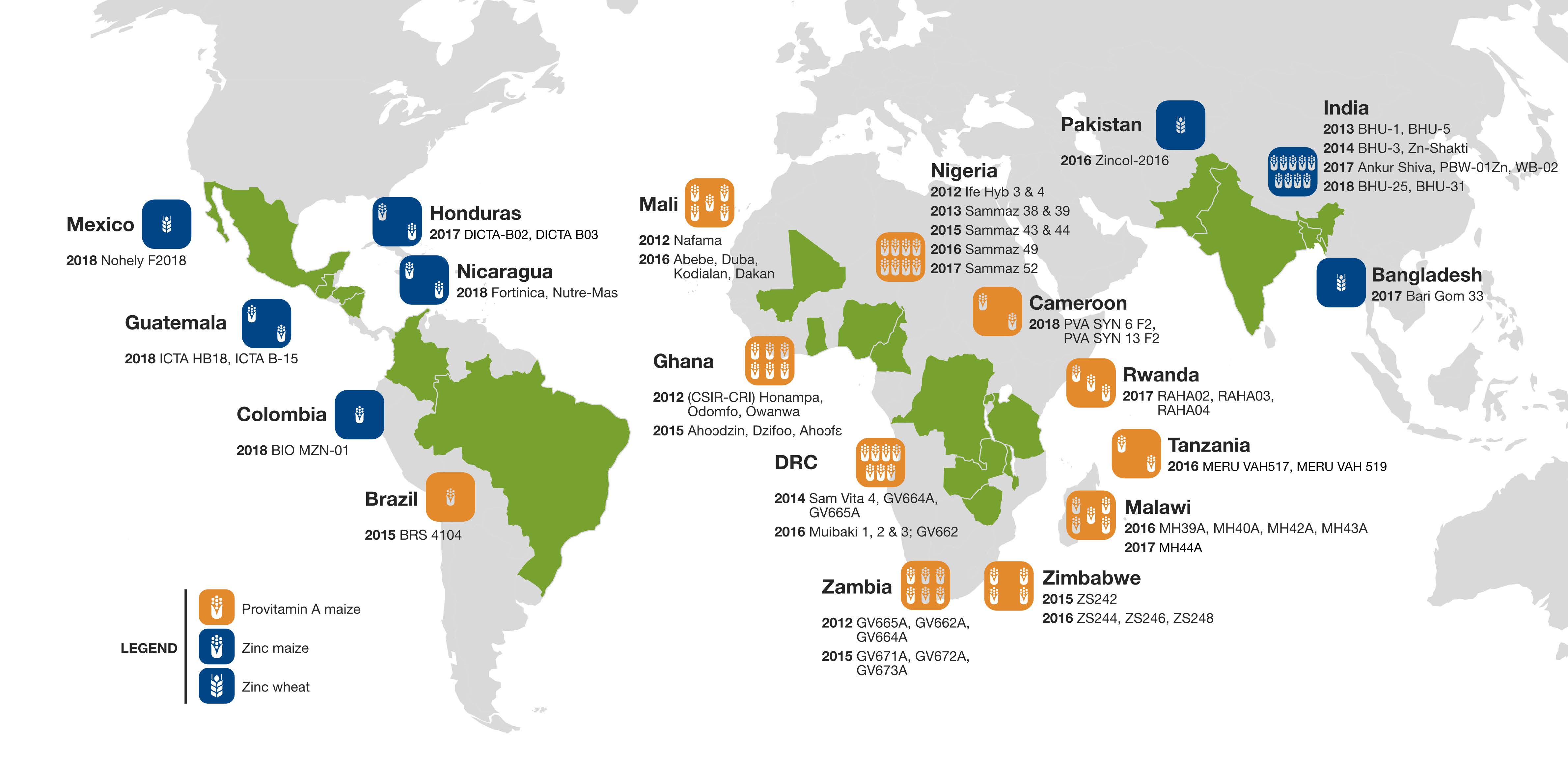 TEXCOCO, Mexico (CIMMYT) – A new museum in Mexico provides historical background and context for scientific research into maize and wheat, emphasizing agricultural achievements in the developing world.
TEXCOCO, Mexico (CIMMYT) – A new museum in Mexico provides historical background and context for scientific research into maize and wheat, emphasizing agricultural achievements in the developing world.
The inaugural exhibition at the museum opened on Wednesday to coincide with the 50th anniversary celebrations of the International Maize and Wheat Improvement Center (CIMMYT).
“The interactive displays in this vibrant and informative space underscore the significance of 50 years of maize and wheat research conducted throughout the world,” said Martin Kropff, CIMMYT director general. “We now have a space at CIMMYT that allows visitors to dig into the history, present and future of the center in an innovative way.”
CIMMYT has helped reduce the proportion of hungry people from about half the global population in the 1960s to below 20 percent today. Yearly economic benefits from its research and training activities, conducted on a budget of $180 million, are conservatively estimated at $4 billion.
The 200-square-meter (2,150-square-foot) museum is based at CIMMYT’s El Batan headquarters, promoting the work of CIMMYT’s scientific research and focusing on achievements and on the ground impacts in the world and raising awareness of future challenges. It features information and displays about staff achievements, including those of Nobel Peace Prize laureate Norman Borlaug. Scientists working at CIMMYT have been honored with the Nobel Peace Prize, three World Food Prizes and many other significant awards.
The museum represents a bridge between two of CIMMYT’s director generals, with former Director General Thomas Lumpkin spearheading the initiative and Kropff carrying out and completing this vision during the ceremony today.
Visitors to the museum can explore the cultural and historical significance of maize and wheat.
“The museum engages visitors in the cultural aspects of research that can amplify understanding of its socio-cultural impact and generate dialogue,” said Richard Fulss, head of CIMMYT’s knowledge management unit in charge of the museum. “It expresses CIMMYT’s scientific developments in new ways, illustrating it in various themes and topics showcasing its global scope and impacts.”
Interactive illustrations of maize and wheat portray origins, historical influence on emerging nations and how the crops are consumed in different parts of the world.
Of key importance to the museum will be how staple maize and wheat crops have evolved over time, including the role of tools and technology, work in the research labs and the diversity of seeds kept by CIMMYT.
 Nutrition, health and food security
Nutrition, health and food security 
